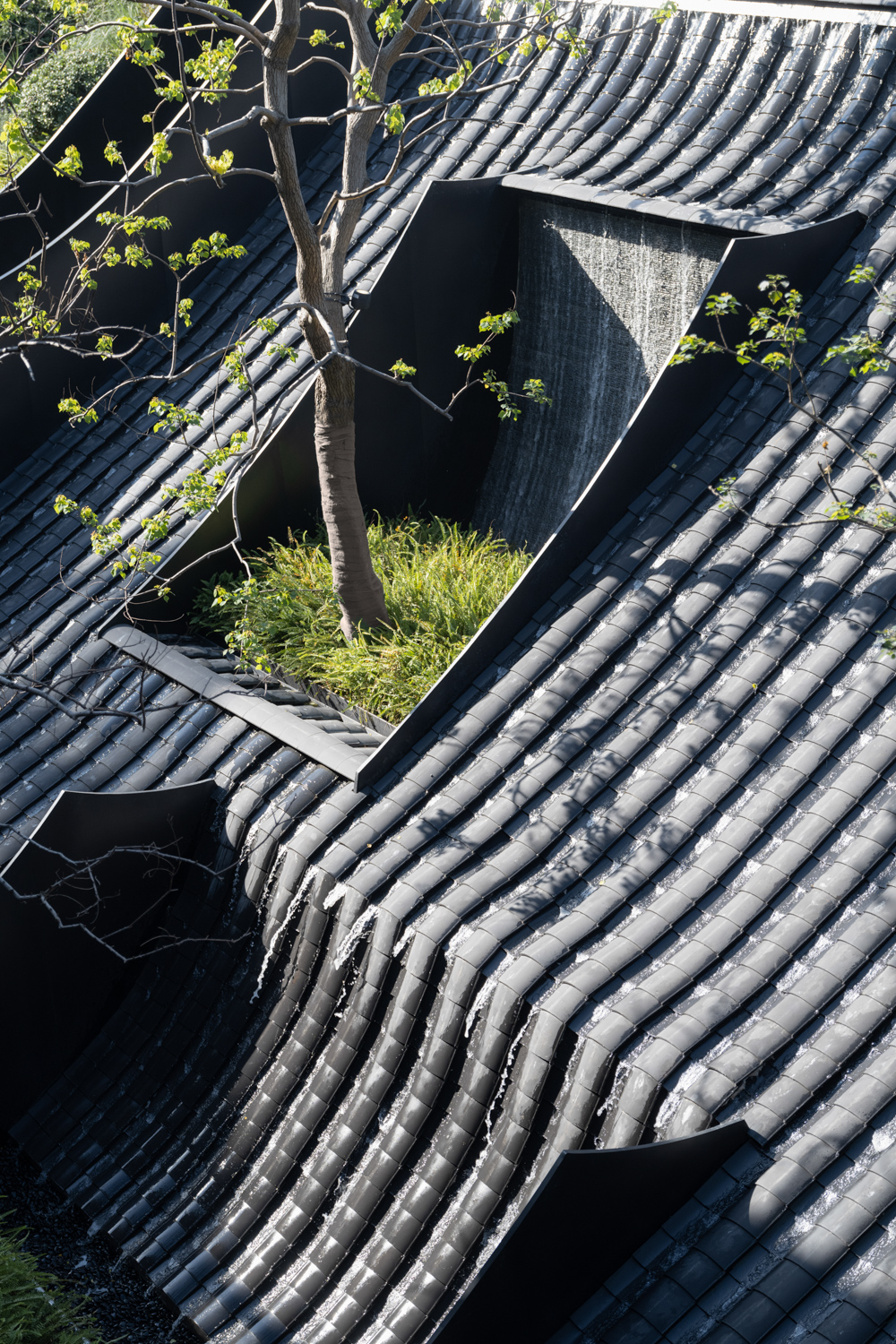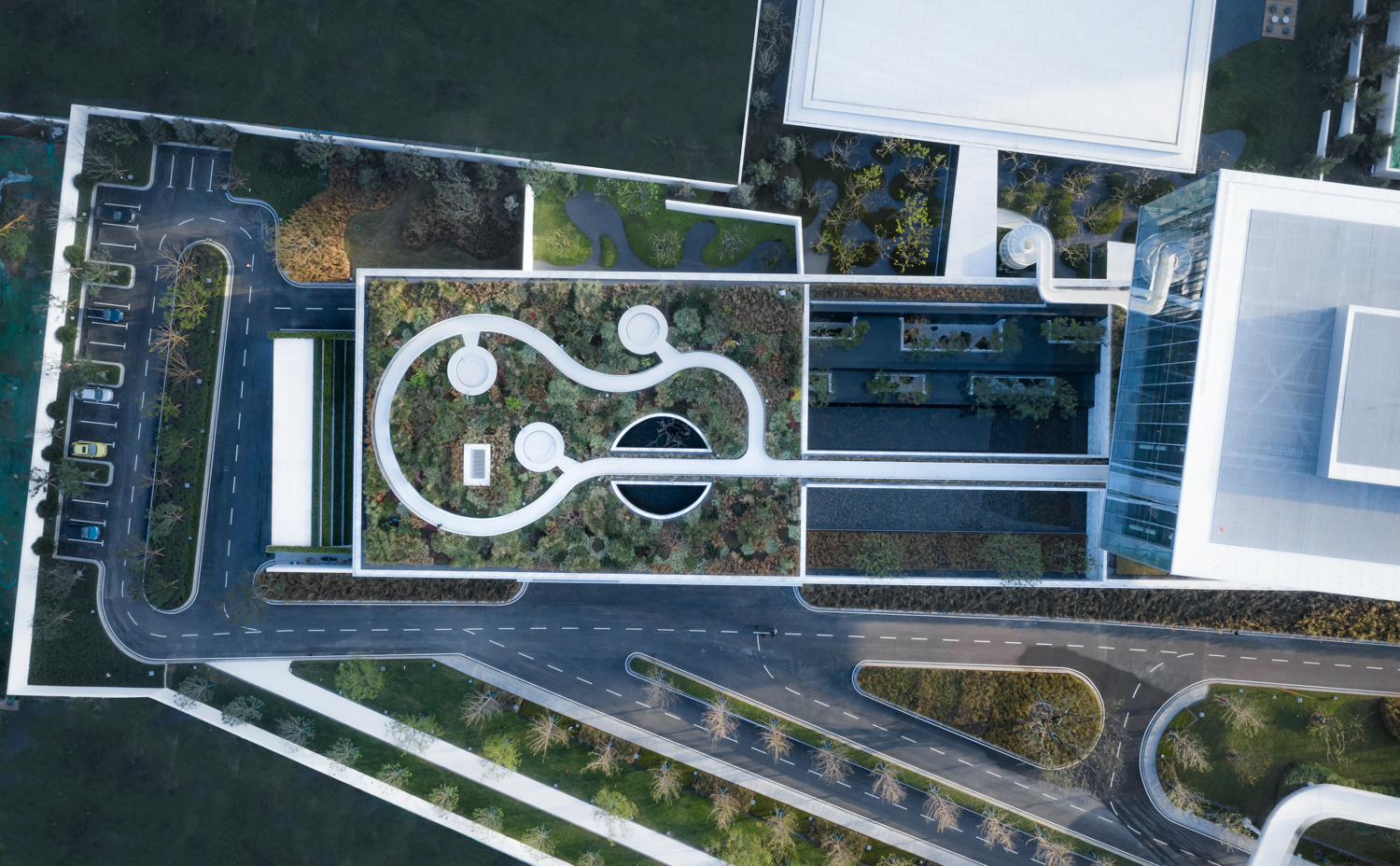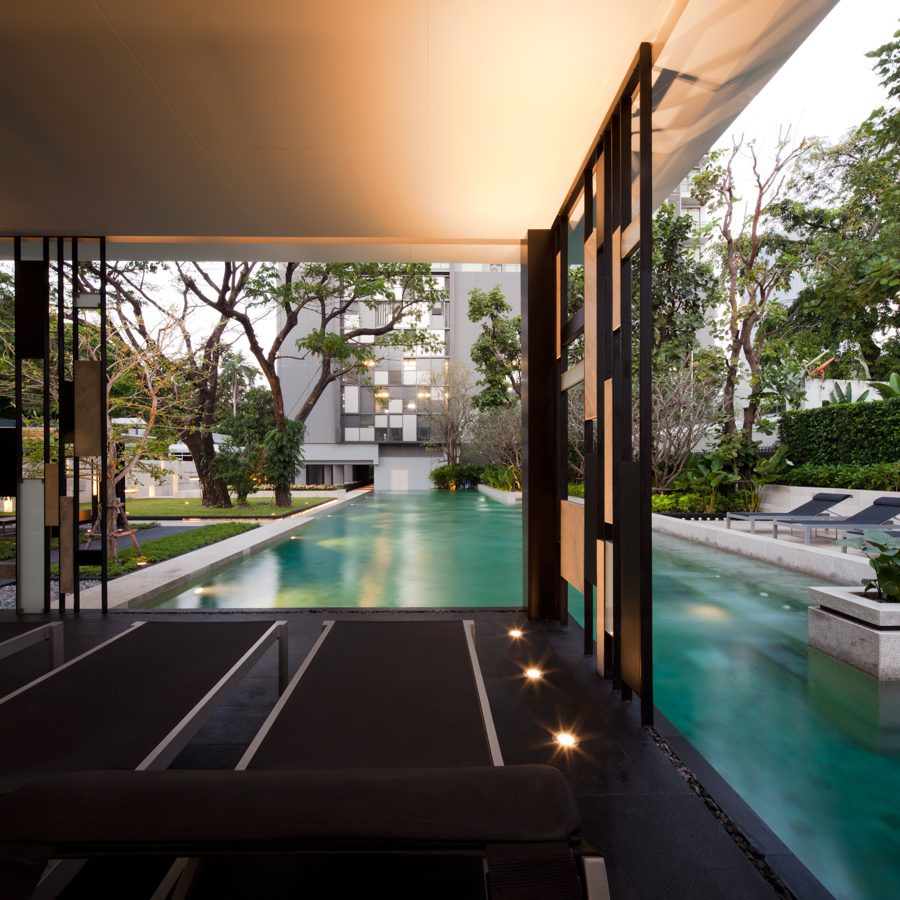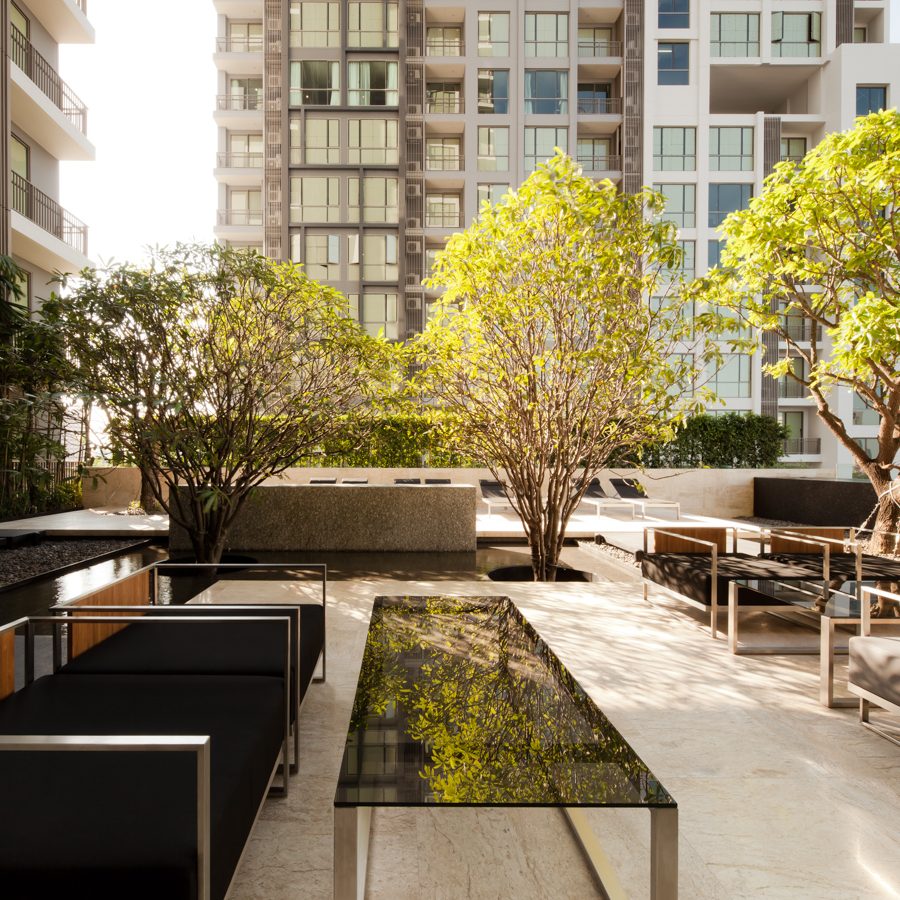ART4D HAS A CONVERSATION WITH ATTAPORN KOBKONGSANTI, A FOUNDER OF TROP : TERRAINS + OPEN SPACE, ABOUT PROJECTS ON THE INTERNATIONAL STAGE, THE CURRENT TREND OF LANDSCAPE DESIGN, AND THE FUTURE OF TROP : TERRAINS + OPEN SPACE
TEXT: PRATARN TEERATADA
PHOTO COURTESY OF TROP : terrains + open space
(For Thai, press here)
Attaporn Kobkongsanti, the founder of TROP : terrains + open space, is one of the landscape architects with some very challenging and impressive projects in his portfolio, with works that have frequented the international landscape architectural arena as both a shortlisted candidate and winner of globally recognized competitions and awards. TROP’s approach and design process involves a creative amalgamation of terrains and open spaces. Attaporn talks with us about various topics, including the ideas behind TROP’s operation and success, all the way to the current and future movements in the global landscape design scene.

art4d: From day one until now, what are the strategies that have contributed to the growth and success of your studio?
Attaporn Kobkongsanti: I didn’t strategize anything from the start. I never planned the first year or five year objectives. I remember the feeling when I first opened the office being more about me wanting to do something I wanted to see happen but hadn’t seen anybody doing. I didn’t know what it was that wanted to see but I felt like nobody was doing it, so I decided to open my studio, it’s pretty much as simple as that.
Then everything sort of progressed through different time periods. This year happens to be TROP’s 15th anniversary, so the first five years were pretty much like being under water. Our portfolio was really small and we didn’t have much to show our prospective clients, but I was doing my best, taking it one project at a time. I would be working on a small-scale project that was packed with all these design elements, and I thought about everything, down to every detail. I was lucky enough to meet several clients who were very open and allowed me to try something new with some of the first projects I did. When these projects were completed, they garnered interests and created this really important momentum that affected the trajectory and future of the studio in the next five years that followed.

Hilton Pattaya
As our portfolio was growing with more completed projects, and with the media coverage our works received, this exposed our studio to the international clientele, especially Chinese clients, who seemed to take a particular liking to our work. We began to get more offers to work on bigger projects overseas. With more responsibilities, we raised our fee, and that granted us the opportunity to expand our team, so that we would be more ready. But it was a period of trial and error. The projects we did in China were done at quite a fast pace but the quality wasn’t that good, and we didn’t have the full control over how things were done. But even though they didn’t turn out 100% in the way we wanted them to, those projects were great experiences for me and the team.

Hilton Pattaya
It wasn’t until these past five years that we were starting to realize what we like and what we’re good at, and our skills have become better, so I thought it was time for us to expand and control the quality of our works in China, which is a very important market of our office. It was also an opportunity for our team in China to grow. I think the decision to open our Shanghai studio is one of the best decisions I have ever made in my life because these past two years, with COVID and everything, I haven’t been able to travel but I have the Tropster in Shanghai taking care of the quality of our projects. The clients still entrust us to do many incredible projects, and we have been able to survive through the economic crisis that the pandemic has brought. Having studios operated in Bangkok and and Shanghai has improved the quality of our works tremendously especially the projects we’ve done in China in the past 2-3 years. This shift is a major driving force that is pushing us toward the next five years we are about to encounter.
art4d: Apparently, a lot of the projects that TROP did has gained interest and recognition from the global arena of landscape architecture, could you give us a couple of examples of the works that you are most proud of?
AK: The first project that really made a name for us in the global arena is Hilton Pattaya. I think it made people start to recognize that there was something going on here, and that something was us. Then there’s Quattro by Sansiri, which won us the ASLA (American Society of Landscape Architects) award in 2012. That marks the first time a project from Thailand to ever win the award and it’s the second project from Southeast Asia after the landscape of Shangi Airport in Singapore. That win sparked interest from Asian design industries in our studio.

Hilton Pattaya

Quattro

Quattro
Another one that stays quite vividly in my memory is SUNAC’s Grand Milestone in Xian. It was really fun because the scope of our work was to design the garden of the project’s massive clubhouse. It was actually a private project but the site is situated on this hill that sits ten meters above the highway, resting along the front side of the project. The client was really worried that they were investing this huge amount of money on the clubhouse that people might not see, so they asked us to design a very big sculpture, which would be placed at the project’s entrance. I didn’t want to create something just to get people to look at. I wanted it to somehow contribute to the nearby community and the project itself. Having seen the site, I saw that there was this overpass in front of the project but it was closed because the steps were linked to the pavement, which was like ten meters below, so it ended up being too dangerous to use and the local authorities had it closed so it was left unused ever since. The idea that I had was that since the client wanting a large sculpture, instead of creating a new one, why didn’t we just turn the steps of the overpass into the sculpture, getting rid of the steps and building a 200-meter long ramp for people with wheelchairs, the elderly and children to use easily. It’s beautiful and it can benefit so many people. Not only that, it would connect the two sides of the highway together while the community would have a new meeting space. Fortunately, the client agreed with the idea and we were able to make our vision come true. The project ended up winning us the 2021’s 2021 Architizer A+ Awards, Jury Winner in the Urban and Masterplan category.

Grand Milestone

Grand Milestone

Grand Milestone
Another project that I personally like is Vanke’s An Villa in Shaoxing, China. It rains several months of the year in Shaoxing and people there have been living with water for generations, and the city is home to ancient urban districts where humans, the rain and waterways coexist are intertwined. When we were given the scope of what we had to work with, we had this idea of wanting to create something that really conveys Shaoxing; something with a sense of place, and the old way life, a memento that reminisces the childhood of the Shaoxing’s natives and residents. The area we were asked to work with is this sunken space, which brings natural light into the underground floor. It was this large, rectangular hole and we didn’t want the space to look too much like a box with this gigantic wall on the side. We wanted to create a space that flows up to the garden and the building on the high floor level. We also thought about how to work with the local climate of constant rain and cloudy sky, so we imagined this image of the skyline of roofs in Shaoxing’s old districts and a series of beautiful slopes they create. The roofs were constructed using this local material made by local makers and it’s a durable material that is able to withstand Shaoxing’s rain for thousands of years. So we decided to use the roof of Shaoxing architecture to create what we called Roof and Rain Court.

An Villa Shaoxing

An Villa Shaoxing

An Villa Shaoxing
art4d: What is the international landscape architectural community particularly interested in at the moment?
AK: I think in these past several years, the environment is probably what the landscape industry, and the world, are paying extra interest and attention to. With the way the world is running, climate change has become the most concerning issue. The landscape industry works directly on improving the environment, in addition to beauty, so a true understanding in nature can genuinely help us live with nature in a more sustainable and meaningful manner, and ultimately help to make the world a better place. The pandemic has also changed the way people live significantly and outdoor spaces with efficient ventilation have their own merits in controlling and preventing the spreading of this infectious disease, so I think we will be seeing many more concepts and ideas emerging as a result of these two issues.
art4d: What are the qualities that a good landscape architect should have?
AK: There are many of them and I don’t have all of them. So let’s look at the fundamental qualities that every profession with high level of professionalism is suppose to have such as the knowledge, the skills, the love for the job, the drive to learn and expand your knowledge, to improve yourself and to be better at what you do. Responsibility is also vital and the most important trait is punctuality. A lot of people have asked me whether passion is important. Thomas Keller is one of my idols. He’s the head chef of iconic restaurants, and French Laundry is one of them, and he once said that every person who sent him their resumes wrote about their passion or how passionate they are. But he doesn’t really care about passion all that much if not at all. He said that passion comes and goes and each year, when new seasonal ingredients arrive, everyone gets all excited and passionate. But wait until three weeks later and you find yourself cooking the same ingredients every single day, making the same dish hundreds of time a day, you’ll get bored and that’s when the passion withers away. Chef Keller said that, to him, passion isn’t as important as the desire to achieve something (even if you’re bored or not that passionate about it anymore). That’s what drives a person to stay determined and do their job better.
art4d: What’s the next step of TROP : terrain + open space?
AK: After fifteen years, it’s like we are now standing on a hill for a change, and we’re starting to see what lies ahead a bit clearer and farther, seeing all these massive mountains, so much bigger than the hill we’re standing on and seeing that there are so many roads to explore. Some of the roads may lead to new opportunities, which may end up taking us further. Some of the roads may take us down a hole. I think if we don’t let ourselves be in too much of a hurry, our past experiences should be able to help us see the path we’re walking to in a clearer light. I still don’t know where this path will lead us to five years from now but I think we will try to pave our own way, with our best ability, one step at a time.

Grand Milestone
trop.land
facebook.com/TROP.terrains.openspace










